
Waves are one of the most beautiful and awe-inspiring natural phenomena.They are in a continual set of motion – rising up, moving forward, splashing amongst themselves, losing their motion and then rising again.
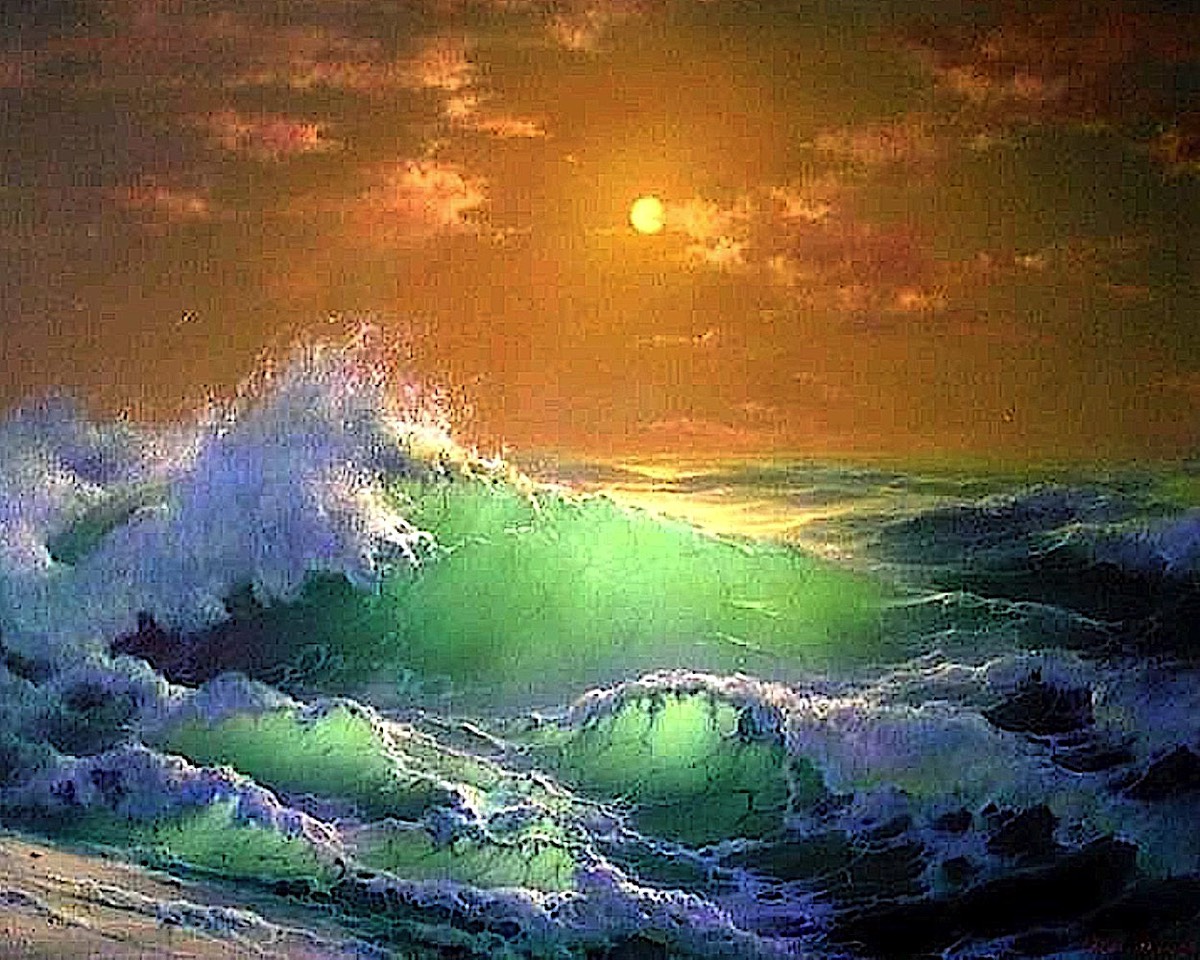
Information about the Ocean Waves
They are a treat to watch, and even better to play with. They are the reason why beach-goers and surfers visit otherwise boring sea beaches. Yes, you heard me right! Imagine a beach, with no waves at all.

1. Surface Waves
Waves affect a large number of marine activities and biochemical processes that take place on and below the ocean surface. The widespread wind‐generated waves are, for example, responsible for inducing considerable loads on marine structures such as ships and offshore platforms, pipelines, mooring systems, renewable energy installations, and port activities among many others. Further, waves and wave breaking induce motion and turbulence through the water column. This plays a fundamental role in expanding or contracting the mixed layer depth, regulating biological processes in the upper ocean, exchanging heat and gasses at the air–sea interface, and controlling the global climate In coastal regions, waves also induce stresses on the sea floor, contributing to erosion, transport, and deposition of sediment and more generally to coastal morphodynamics, affecting all types of human activities near shore.
Waves are oscillations (or disturbances) of the water surface that can be observed in any water basin like rivers, lakes, seas, and oceans. For a wave to exist there must be an initial equilibrium state, which is perturbed by an initial disturbance and compensated by a restoring force.
Generating mechanisms are primarily originated by
local wind, seismic oscillations of the Earth during earthquakes, atmospheric pressure gradients, and gravitational attraction between the Earth, Sun and Moon.
Normally, these forces are compensated by gravity.
The present article focuses on surface waves.
Waves are oscillations (or disturbances) of the water surface that can be observed in any water basin like rivers, lakes, seas, and oceans. For a wave to exist there must be an initial equilibrium state, which is perturbed by an initial disturbance and compensated by a restoring force.
Generating mechanisms are primarily originated by
local wind, seismic oscillations of the Earth during earthquakes, atmospheric pressure gradients, and gravitational attraction between the Earth, Sun and Moon.
Normally, these forces are compensated by gravity.
The present article focuses on surface waves.
2. Types of Ocean Waves and Wave Classification
The most intuitive and commonly used classification is based on the wave period or the associated wavelength. In Table 1, a summary of the different types of surface waves is presented with respect to wave period. The associated originating forcing and restoring mechanisms are also reported. A graphical representation is provided in Figure 1, where an idealized wave energy spectrum shows the full range of ocean wave components.

2.1 Capillary Waves
The shortest‐period waves, and the first to be noticed on the ocean surface when wind starts blowing, are the capillary waves , which resemble cat 's paws ripping the otherwise smooth surface. This peculiar wavy structure is generally forced by a light breeze of speeds of about 3 m/s (taken at a reference height of 10 m from the water level) and assumes a fine structure of small ripples with a wavelength of less than 1.5 cm and period less than 0.1 s (an example of capillary waves is shown in Figure 2).
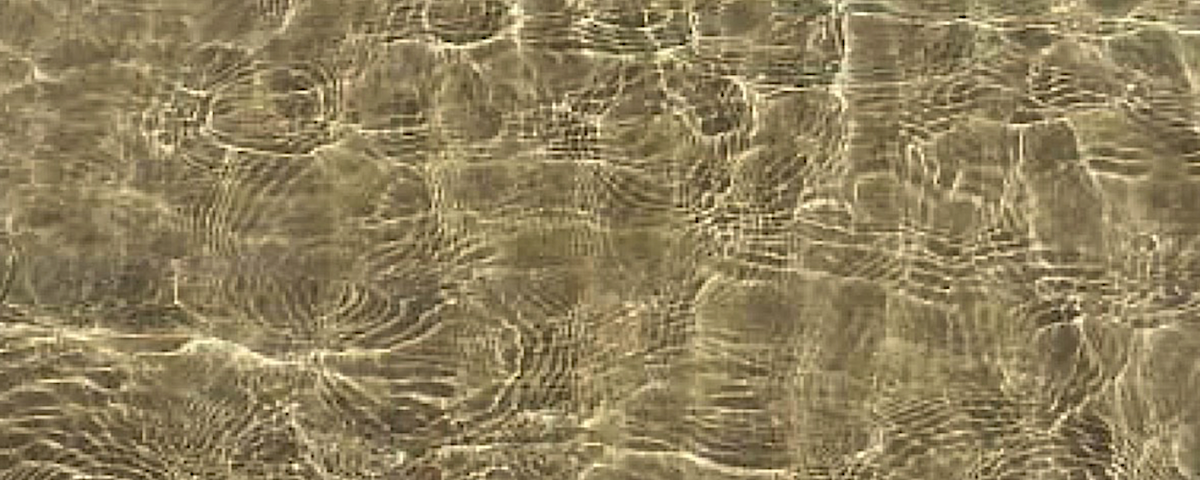
2.2 Gravity Waves: Wind Sea and Swell
A consistent blowing of wind over a substantial fetch (i.e., the distance over which the wind blows) forces waves to become much longer than the threshold wavelength of 1.7 cm. As the wavelength grows longer than 1.5 m (i.e., wave period becomes larger than 1 s), surface tension becomes negligible and gravity remains the sole restoring mechanism. Under these circumstances, waves are classified as gravity waves
Under the direct effect of the local wind, a large number of components with different wave periods, direction of propagations and phases are generated.
When waves propagate over a depth that is much larger than the wavelength (i.e., the water depth can be considered as of infinite depth), longer waves travel faster than shorter ones, dispersing from one another). As a consequence, long waves rapidly move outside the generating area
(Figure 3) and become known as SWELLS.
Under the direct effect of the local wind, a large number of components with different wave periods, direction of propagations and phases are generated.
When waves propagate over a depth that is much larger than the wavelength (i.e., the water depth can be considered as of infinite depth), longer waves travel faster than shorter ones, dispersing from one another). As a consequence, long waves rapidly move outside the generating area
(Figure 3) and become known as SWELLS.
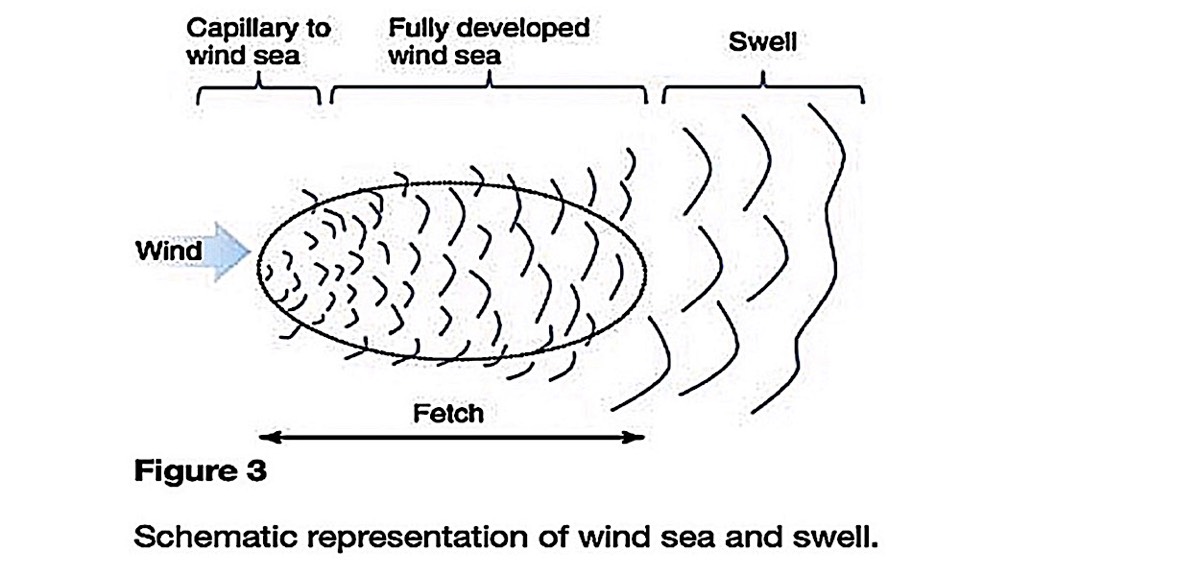
2.3 Infragravity Waves
Nonlinear interactions between wave components convert part of the energy associated to wind‐generated gravity waves into subharmonics, generating wave trains and are normally known as (Figure 4) Infragravity Waves.
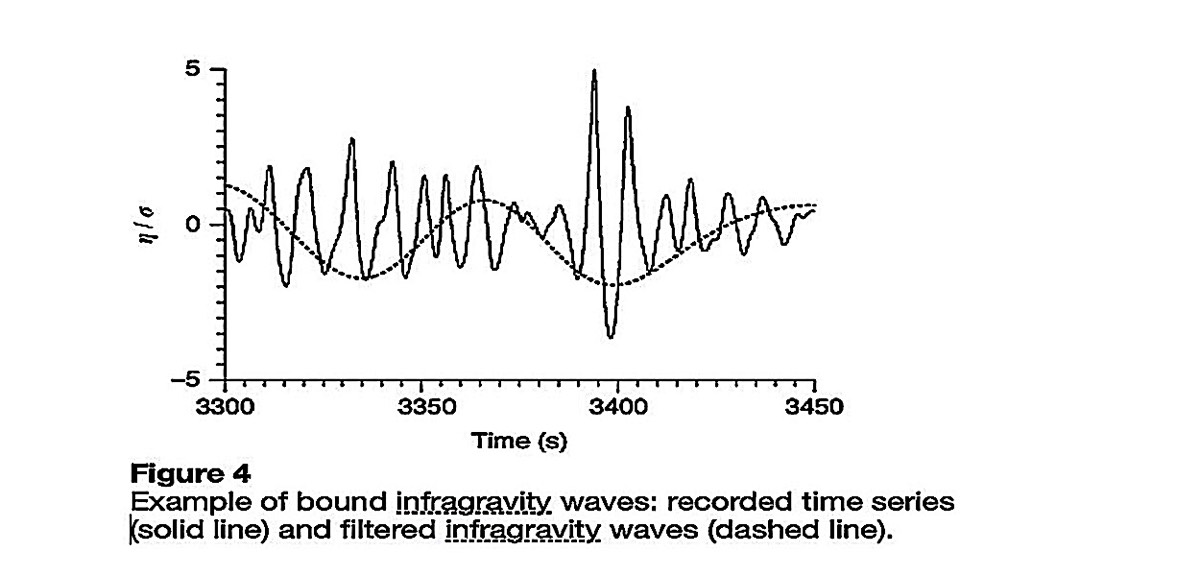
2.4 Long‐Period Waves (Tsunamis and Storm Surges)
Well‐defined waves with periods longer than 5 min are routinely recorded in the ocean.
Although different originating mechanisms can be responsible for such waves, meteorological conditions and earthquakes remain the primary cause.
Normally, long oscillations generated by atmospheric conditions are known as seiches and storm surges , while tsunamis identify waves originated from earthquakes.
Tsunamis are long waves with period varying between 1 and 20 min (wavelength from a few kilometers up to a few hundreds of kilometers) that are generated by sudden tectonic changes to the sea bed or landslides that are usually attributed to earthquakes and submarine volcanic activity.
In the open ocean, tsunamis have very small amplitude (only rarely wave height exceeds 1 m) and generally pass completely unnoticed.
Propagation into shallower waters, however, makes wave shoal, compressing the shape of the oscillation. As a result, its speed diminishes of about one order of magnitude (from about 800 to <80 km/h), while its wavelength reduces to less than 20 km with a consequent substantial growth of wave height.
Although different originating mechanisms can be responsible for such waves, meteorological conditions and earthquakes remain the primary cause.
Normally, long oscillations generated by atmospheric conditions are known as seiches and storm surges , while tsunamis identify waves originated from earthquakes.
Tsunamis are long waves with period varying between 1 and 20 min (wavelength from a few kilometers up to a few hundreds of kilometers) that are generated by sudden tectonic changes to the sea bed or landslides that are usually attributed to earthquakes and submarine volcanic activity.
In the open ocean, tsunamis have very small amplitude (only rarely wave height exceeds 1 m) and generally pass completely unnoticed.
Propagation into shallower waters, however, makes wave shoal, compressing the shape of the oscillation. As a result, its speed diminishes of about one order of magnitude (from about 800 to <80 km/h), while its wavelength reduces to less than 20 km with a consequent substantial growth of wave height.

2.5 Tides
The combined effect of the Earth's rotation and the gravitational attraction from the Moon and the Sun generates two bulges in the ocean surface: one points toward the Moon/Sun and one away from them (see a schematic in Figure 6).
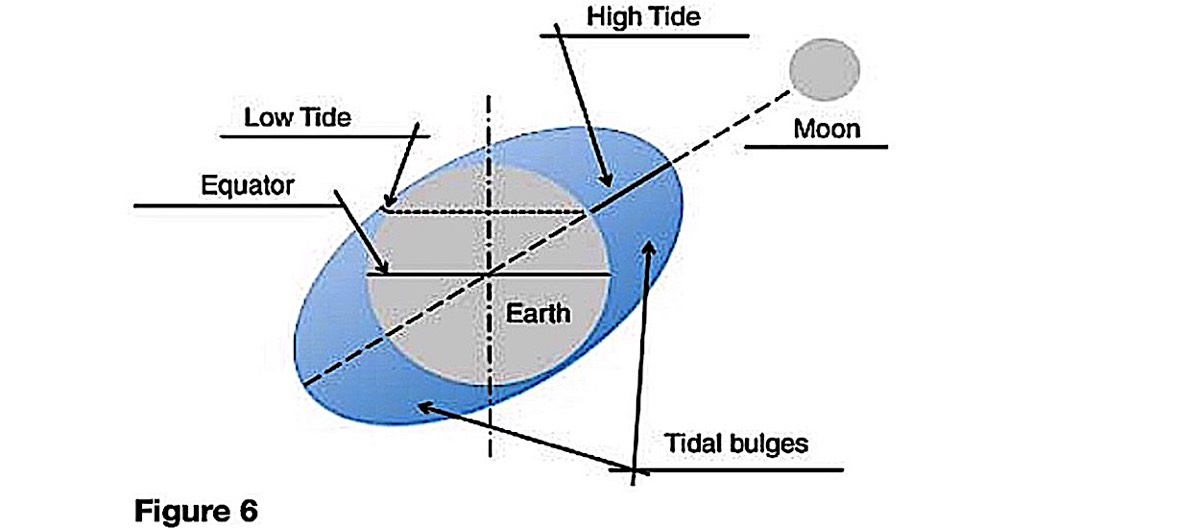
3. let's enjoy the great Ocean Waves...

The adrenaline kicks in and you feel your heart pumping. You break the surface and you feel all pumped and exhilarated. The feeling of all that wind in your face and the speed you get...fun, healthy, rejuvenating,
> Exiting through the Surfing Waves
Enjoy and visit this clean and great “Worldclass” Ocean Beach
> Cabarete Beach
> Exiting through the Surfing Waves
Enjoy and visit this clean and great “Worldclass” Ocean Beach
> Cabarete Beach
4 .Let's protect our Oceans

Our Oceans are in more trouble than ever before…
> iOceanLife.com
For centuries, people have assumed that our vast ocean was limitless and immune to human impacts. It’s only recently that scientists have come to understand the devastating effects we’ve already had on our seas.
iOceanLife.com

Beautiful Nature

I declare this world is so beautiful that I can hardly believe it exists. The sky, the mountains, the trees, the animals, give us a delight in and for themselves.
iBeautifulNature.com
Information: Sustainability

As populations have increased and we have relied on the Earth's natural resources—such as minerals, petroleum, coal, gas, and more—the Earth's biodiversity and creatures, from birds to insects to mammals, have declined in number.
iEarthLife.com
Follow Us for NEWS and Exchange of Ideas and Information

This is our planet! So why we are not protecting it?”
This is where we live, why are we hurting our home. Live on our earth. Love our earth, laugh on our earth this is the only one we have – SAVE IT.
iEarthLife.com
